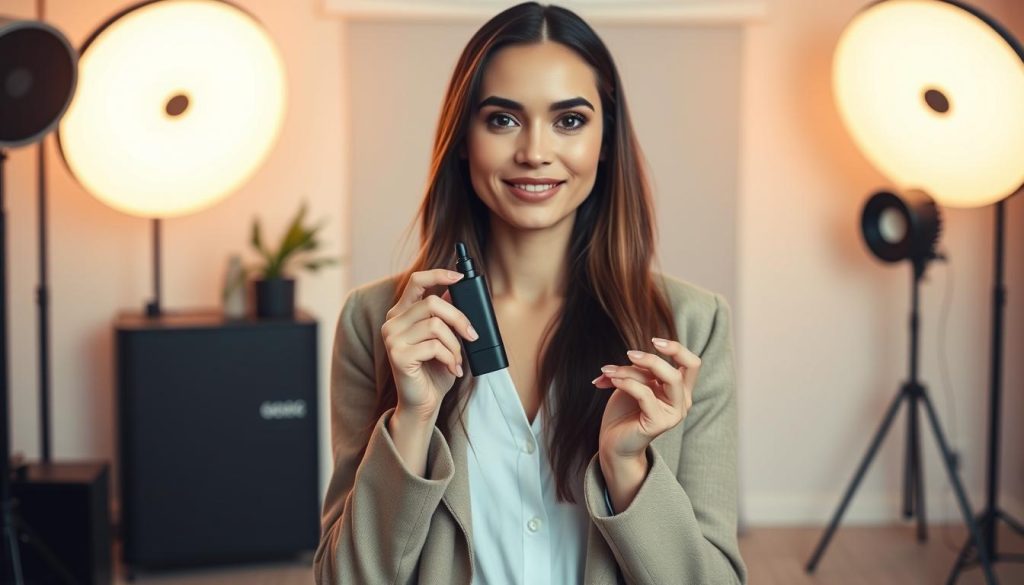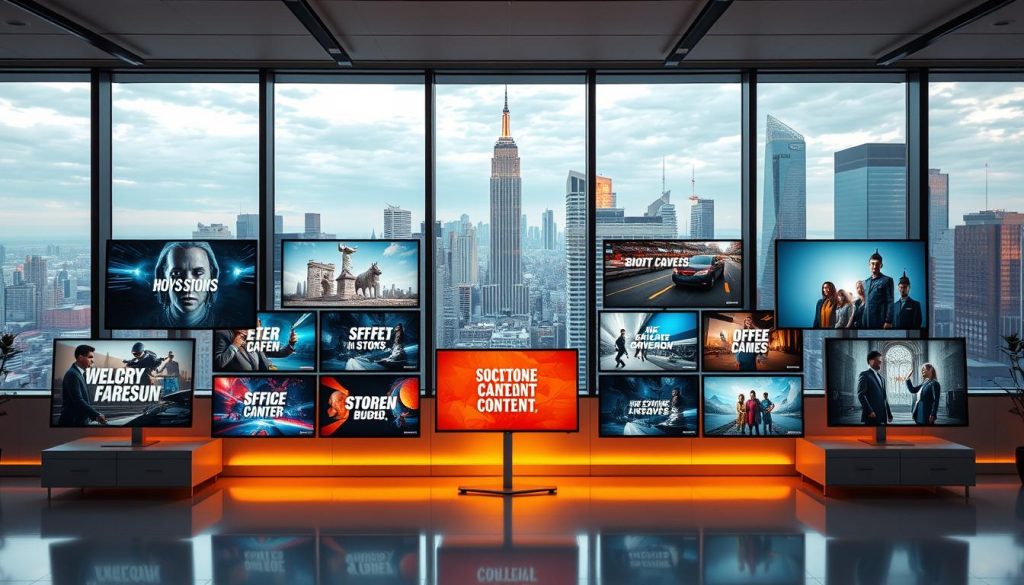In today’s crowded digital world, businesses need smart ways to stand out. Paid promotional media offers a powerful solution. This approach helps companies connect with new audiences in an authentic way.
Unlike traditional ads that interrupt, this method provides genuine value. It blends smoothly with the platform it appears on, whether a blog, social media feed, or podcast. This seamless integration builds trust and engagement.
This strategy has evolved from simple magazine features into a dominant digital marketing force. Successful campaigns require careful planning and the right partners. This guide will show you how to create effective promotional material that delivers real results.
Table of Contents
Key Takeaways
- Sponsored content is a paid promotional strategy that integrates with a publisher’s platform.
- It provides value to the audience instead of disrupting their experience.
- This approach builds greater brand credibility than traditional advertising.
- It appears across blogs, social media, podcasts, and video platforms.
- Strategic planning and partner selection are crucial for success.
- Compliance with advertising guidelines is essential for all campaigns.
Understanding Sponsored Content and Its Role in Modern Marketing
The digital marketing landscape has been reshaped by a strategy that prioritizes value over interruption. This approach centers on paid promotional media that feels native to its environment.
Defining Sponsored Content
So, what exactly is it? This form of advertising is paid promotional media purchased by an advertiser but distributed by a publisher or influencer. Its uniqueness lies in its design.
It matches the host platform’s visual style and editorial tone. This makes it far less intrusive than pop-up ads or traditional banners. The goal is to provide genuine value, not just a sales pitch.
Most users don’t immediately recognize this material as an ad. It blends so well with organic posts that it builds brand credibility. Trust grows when the message feels like a natural part of the user’s experience.
This method is a specific type of native advertising. However, it often involves a deeper partnership. The publisher may help create the material to ensure it aligns with their audience’s expectations.
Evolution from Traditional to Digital Media
This concept isn’t entirely new. It evolved from print « advertorials » in magazines and newspapers. The core idea was the same: make advertising look like the publication’s own content.
The shift to digital media supercharged its potential. Today, it appears in many formats:
- Seamless social media feeds on Instagram and Facebook.
- Integrated segments within popular podcasts and YouTube videos.
- Interactive articles on major online news sites.
This expansion offers brands unprecedented reach. They can connect with targeted audiences in a context that feels authentic and engaging. This evolution marks a significant advancement in content marketing.
How Sponsored Content Works in Today’s Digital Landscape
Seeing a post from a favorite creator that subtly features a product is a prime example of this strategy in action. This promotional material operates within a complex digital ecosystem. Brands form partnerships to place their messages directly into trusted environments.
The primary goals are clear. Campaigns aim to drive qualified traffic to a website. They also work to boost brand recognition and ultimately increase sales.

Integration with Social Media and Influencer Marketing
Social media platforms are central to this approach. A brand pays a platform or a popular influencer to feature its offering. The post is designed to look and feel like the creator’s organic content.
This leverages the trust and authority the influencer has built. Followers are more receptive to a recommendation that feels genuine. This integration makes the promotional message far more effective than a standard ad.
Seamless Blend with Native Advertising
This strategy is a key part of native advertising. The material blends so well with its surroundings that it doesn’t feel disruptive. It matches the style of the website, podcast, or video it appears within.
This seamless fit is its greatest strength. Users are already engaged with content they enjoy. A well-integrated message is more likely to be received positively.
The formats are incredibly diverse. They range from blog articles and listicles to videos and interactive experiences. This variety allows for campaigns tailored to specific audiences and platforms.
Key Advantages of Sponsored Content for Brands
The measurable benefits of promotional media extend far beyond simple visibility. Recent data reveals why this approach delivers superior returns compared to traditional advertising methods.
Enhancing Brand Credibility
Partnering with trusted publishers creates an immediate credibility transfer. According to research, marketers experience a 50% higher brand lift when working with established publishers versus creating their own material.
This association positions your company alongside industry experts. Readers naturally extend their trust in the publisher to your brand. This establishes thought leadership in your field.
Driving Targeted Engagement and Traffic
Parse.ly’s 2022 report shows 48% of organizations use this strategy for revenue generation. Even more impressive, 12% identify it as their most effective revenue driver.
This method generates three times more leads than paid search advertising. It connects you with precisely targeted customers through influencers’ existing audiences.
Quality promotional pieces receive equal attention to organic content. Nielsen research confirms consumers spend 2.5 minutes reading sponsored articles—the same time as editorial content.
Strategic calls-to-action within valuable material drive qualified referral traffic. This approach consistently delivers higher engagement rates and better conversions.
Navigating Federal Trade Commission Guidelines for Sponsored Content
Transparency forms the legal foundation of all modern promotional partnerships. The Federal Trade Commission enforces strict rules about paid material connections. Both brands and creators must follow these guidelines.
Proper disclosure builds consumer trust while ensuring legal compliance. The FTC monitors advertising practices across all digital platforms. Their guidelines protect consumers from deceptive marketing.

Disclosure Best Practices
The commission requires clear labeling of any paid promotional material. This includes situations where creators receive payment, free products, or other benefits. This arrangement is called a « material connection. »
In 2017, the Federal Trade Commission sent over 90 warning letters to influencers and brands. They emphasized the need for proper disclosure in all paid posts. This enforcement action highlighted the importance of transparency.
Social media platforms commonly use hashtags like #ad or #sponsored. Instagram currently hosts over 2.5 million posts with the #sponsored tag. These clear labels help consumers identify paid content.
Disclosures must be clear and conspicuous. Consumers should be able to notice and understand them easily.
Compliance and Regulatory Considerations
Website disclosures require special attention to visibility. The disclosure text should use legible fonts and contrasting colors. Placement near headlines ensures maximum visibility.
Both the advertiser and content creator share responsibility for accuracy. All claims must be truthful and substantiated. Misleading statements violate FTC regulations.
| Disclosure Method | Platform Type | Effectiveness Rating |
|---|---|---|
| #sponsored hashtag | Social Media | High |
| « Advertisement » label | Websites/Blogs | Very High |
| Verbal disclosure | Video/Podcast | Medium |
Use unambiguous language like « advertisement » or « promoted by. » Vague terms can confuse consumers about the nature of the post. Clear communication protects everyone involved.
Proper disclosure maintains brand reputation while building audience trust. It demonstrates commitment to ethical marketing practices. This approach benefits both businesses and consumers long-term.
Creating Compelling Sponsored Content: A How-To Guide
Successful promotional partnerships require more than just budget allocation. They demand strategic planning and careful execution. The process begins with understanding who you’re trying to reach.
Identifying and Understanding Your Audience
Know your target audience’s media habits and trusted voices. Research which platforms they frequent and what formats they prefer. This insight guides your entire approach.
Analyze demographic data and content consumption patterns. Identify the topics that genuinely interest your ideal customers. This foundation ensures your material resonates effectively.
Partnering with the Right Publisher or Influencer
Selecting the perfect collaborator is your most critical decision. The partner’s existing followers should align with your target market. Their editorial voice must match your brand’s values.
Evaluate potential partners using clear criteria. Consider audience alignment, content quality, and engagement metrics. A strong partnership creates authentic material that benefits both parties.
| Evaluation Criteria | Importance Level | Key Considerations |
|---|---|---|
| Audience Alignment | Critical | Demographic match, interest overlap |
| Content Quality | High | Production value, editorial standards |
| Engagement Metrics | High | Comments, shares, follower interaction |
| Brand Compatibility | Medium | Values alignment, tone consistency |
Establish clear communication about objectives and expectations. Your marketing team should collaborate closely with the creator. This ensures the final piece serves both audiences effectively.
Optimizing Sponsored Content for SEO and Engagement
Beyond immediate campaign results, well-optimized material can generate sustained organic traffic for months or even years. This approach transforms promotional partnerships into valuable evergreen assets.
Keyword Integration and Search Intent Alignment
Effective optimization begins with thorough keyword research. Identify terms your audience actively searches for related to your products or services.

Integrate these keywords naturally into headlines and body text. The placement should feel organic rather than forced. This maintains editorial quality while improving search visibility.
Align your material with user search intent. Match the information provided to what people actually seek. Whether informational, navigational, or transactional intent, your approach should satisfy user needs.
| Optimization Strategy | Importance Level | Key Implementation |
|---|---|---|
| Keyword Research | Critical | Identify audience search terms |
| Search Intent Matching | High | Align content with user goals |
| Technical SEO Elements | High | Metadata, alt text, internal links |
| Content Format Selection | Medium | Choose formats that perform well in search |
Work closely with publishers to ensure proper technical implementation. This includes metadata, image alt text, and internal linking structures. These elements significantly improve discoverability.
Measure performance through key metrics like organic traffic growth and keyword rankings. Track engagement indicators such as time on page and bounce rates. For comprehensive guidance on creating optimized material, explore additional resources.
Leveraging Social Media Platforms for Effective Campaigns
Social media platforms have transformed into powerful marketing engines where promotional posts blend seamlessly with organic user feeds. These channels offer unparalleled reach for brands seeking authentic audience connections. The native appearance of these ads makes them feel like natural parts of the user experience.
Maximizing Impact on Platforms like Instagram, Facebook, and TikTok
Each social media platform requires distinct strategies for optimal results. Instagram excels with high-quality visual media and Stories, while Facebook favors community-focused longer posts. TikTok thrives on trend-driven video content that captures immediate attention.
Influencer partnerships drive significant impact, with 80% of marketers reporting effectiveness. These creators monetize their platforms by developing authentic posts that maintain their unique voice. This approach preserves audience trust while delivering brand messages.
Timing is crucial for maximizing engagement. Schedule posts during peak activity periods when target audiences are most active. Platform-specific features like Instagram Shopping tags and TikTok’s link-in-bio functionality create smooth paths from discovery to conversion.
For deeper insights into leveraging social media strategies, explore additional resources that cover optimal video lengths and call-to-action placements. These elements ensure your media investments deliver measurable returns.
Real-World Examples of Successful Sponsored Content
The most effective paid media campaigns often look indistinguishable from organic material. These examples demonstrate how brands create authentic connections through strategic partnerships.

Case Studies from Influencers and Publishers
Good ‘n’ Fun partnered with digital creator Dulce Randall for a post featuring her husky and corgi. The dogs excitedly stared at treat bags, perfectly matching her adventure content style.
Michelob Ultra collaborated with Tastemade on a recipe video. The beer became an ingredient in shrimp ceviche tostadas, blending naturally with the publisher’s culinary format.
Sleep Number created an educational piece for Huffington Post about sleep science. It included CDC facts and a quiz, with minimal brand mention until the end. This approach made it feel like genuine editorial content.
Adweek published a visually dynamic piece for Smartsheet software. The material established product need through how-to guidance rather than hard-sell tactics.
Scientific American maintained full editorial control in a cardiovascular health story sponsored by Takeda. The publisher’s expertise combined with sponsor support created valuable information for readers.
These campaigns show successful ads provide real value while maintaining platform authenticity. The best examples seamlessly integrate brand messages into content audiences already trust.
Strategies to Expand Your Reach with Sponsored Content
Strategic alliances between complementary organizations create powerful synergies that amplify marketing impact. These innovative approaches help your brand connect with untapped market segments through trusted channels.
Innovative Partnership Models
Long-term ambassador programs offer sustained exposure beyond single campaigns. This approach builds deeper connections with your target audience over time.
Co-branded content series with complementary brands in your industry create mutual value. Both parties share production costs while reaching each other’s established customer bases.
Multi-platform campaigns maximize exposure across different audience segments. This strategy ensures your message reaches diverse demographics through various content formats.
| Partnership Type | Duration | Primary Benefit | Best For |
|---|---|---|---|
| Ambassador Programs | Long-term | Authentic integration | Brand loyalty building |
| Co-branded Series | Medium-term | Cost sharing | Market expansion |
| Multi-platform Campaigns | Short-term | Maximum reach | Product launches |
These models sidestep ad blockers by delivering messages within valued editorial material. Your marketing team can focus on core activities while leveraging external creative resources.
The right partnership strategy connects you with customers more likely to engage with your offerings. It effectively uses established market presence as a gateway to new opportunities.
Conclusion
Building lasting customer relationships requires a fundamental shift from promotion to genuine value creation. This approach represents the core strength of modern sponsored content strategy.
Successful campaigns blend seamlessly with trusted platforms, delivering quality information that serves audience interests. This creates authentic connections rather than disruptive advertising.
Effective implementation demands careful planning. Brands must research their target customers thoroughly and select partners whose values align. Each piece should provide genuine value while maintaining transparency.
As traditional methods lose effectiveness, this marketing approach becomes increasingly vital. It reaches people where they spend their time consuming trusted material.
For brands ready to begin, start with small pilot programs. Measure results carefully and scale what works. Mastering content marketing requires ongoing refinement of your strategy.
Ultimately, this isn’t just another marketing tactic. It’s a strategic framework for building meaningful brand relationships through consistently valuable experiences.
FAQ
What is the main difference between sponsored content and a traditional display ad?
The key difference lies in integration. A traditional banner ad is separate from the website’s editorial material. Sponsored material, however, is designed to match the look and feel of the surrounding articles or videos. It provides value by being informative or entertaining, rather than just promotional.
How do I ensure my brand’s material complies with Federal Trade Commission rules?
Clear and conspicuous disclosure is mandatory. Use labels like « Paid Partnership, » « Sponsored, » or « Advertisement » directly at the top of a post or video. The disclosure must be easy for the audience to see or hear before they engage with the piece, ensuring transparency.
Which social media platforms are most effective for this type of marketing?
The best platform depends on your target demographic. Instagram and TikTok are excellent for visual storytelling and reaching younger audiences through influencers. LinkedIn is ideal for B2B campaigns, while Facebook offers robust targeting tools for a broad user base.
Can you give an example of a successful campaign that used native advertising?
A notable example is The New York Times’ partnership with Netflix for « Orange is the New Black. » The publication produced a high-quality, journalistic article about women in prison, which was clearly labeled as being paid for by Netflix. It resonated with readers because it offered genuine insight, not just a sales pitch.
What should I look for when choosing a publisher or influencer to partner with?
A> Focus on alignment. Choose a partner whose audience matches your target customers and whose values reflect your own. Review their past work for quality and authenticity. A genuine connection between the influencer, their followers, and your product leads to higher engagement and trust.
How can I measure the success of my paid partnership campaign?
Success metrics vary by goal. Track website traffic, time spent on page, and conversion rates for lead generation. For brand awareness, monitor social shares, comments, and reach. Use UTM parameters and analytics tools to get a clear picture of your return on investment.





